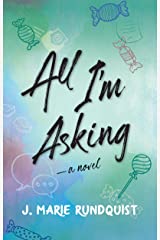IS THERE MORE THAN ONE WAY TO TELL A STORY? THOUGHTS ON NARRATIVE STRUCTURE
Is there more than one way to tell a story?
Thoughts on narrative structure
I have a friend who I met online through a TV show fandom (Bones) and while the fandom and later fanfiction brought us together, we later became fast friends. Because we live in different parts of the country and because we don’t like to talk on the phone (because seriously, who does that kind of nonsense? LOL), we generally communicated through long “life update” email messages with the occasional text or Twitter DM.
And because I’m a writer, I saved all the email correspondence because I’d thought, “I bet I could turn this into a story someday.” Indeed I could. Those email missives became the inspiration of my debut novel, All I’m Asking, a story about friendship.
With each novel I write, I enjoy attempting a new narrative structure or concept. All I’m Asking is an epistolary novel, which means the story is told through emails, texts, and other forms of modern communication. It’s certainly not a new concept, but my question when I set out writing it was, “Is it possible to tell an entire story only using epistolary structure without any narrative prose?”
Naturally it is. I looked to other works to help me such as Julie Schumacher’s Dear Committee Members, a novel told entirely through professional emails and letters of recommendation showing us the unraveling of a university creative writing professor. There’s also Annie Barrows and Mary Ann Shaffer’s The Guernsey Literary and Potato Peel Pie Society, comprised entirely of letters, mostly between a novelist and a fan, back when letters were still the way of communication.
Many books employ the use of text messages within the story since this mode of communication is ubiquitous in our world right now. Emails also still show up. Because of this, I knew using these methods for my storytelling wouldn’t be surprising or confusing. The challenge was creating an immersive experience for the reader with no extra “telling” of the story.
Here are a few ways I eliminated the need for interrupting the epistolary flow with standard narrative prose:
- One of the main plotlines involves the issues developing between Naomi and her best friend. Why wouldn’t we see them getting together a lot? I put them in different time zones and with very different kinds of jobs so that connecting at “convenient” times for one wouldn’t necessarily be convenient for the other to do a live connection. Texts? Sure, but longer, asynchronous conversations work better with email.
- Naomi is an online teacher for an alternative learning high school and naturally, her communications with students will not be by phone. (Just ask your children if you have them!) We see Naomi interacting with her students via exam comments, discussion board posts, and the occasional, reluctant email.
- Naomi is part of an online book club and her fellow book club members act as a support system for each other in different ways. Each chapter ends with a forum discussion of the most recent book they’ve read. Sometimes they discuss the book (and sometimes they don’t).
- While much of the story could have been simply email exchanges, things happen in Naomi’s life that she doesn’t always share with her best friend. To that end, we see a developing relationship with a guy at a coffee shop and their food/drink orders. Naomi has a challenging relationship with her mother which we see in arrest reports and cut-off voicemail transcripts. Bits and pieces of other non-traditional narratives also appear to give a fuller picture of various supporting characters.
It was truly a fun challenge to create a story this way. The novel explores serious issues, but the format lends itself well to interspersing moments of levity, too.
Naomi is a history teacher and she asks her students: “What might archeologists 1,000 years from now learn—and make conclusions from—regarding our current culture? What artifacts and remains would lead them to those conclusions? How accurate would they be?”
A novel entirely written in emails, texts, coffee shop receipts, forum posts, and news articles would be a pretty accurate look at our society, if you ask me.
Bio:
J. Marie Rundquist believes a day isn’t complete without time spent reading. Stories she loves best–to read and to write– feature characters from all walks of life who learn from one another. When she isn’t writing, you’ll find J. Marie exploring all the K-12 public education world has to offer through teaching, learning, and supporting others in their educational roles.
In spite of trying to live in other parts of the U.S., J. Marie accepted her fate and now embraces six-month winters in Minnesota, showing off photos of hiking in sub-zero temperatures. She lives in the Twin Cities with her family, two cats, and a never-ending supply of Dr. Pepper.
https://www.instagram.com/
https://twitter.com/
https://www.facebook.com/
https://www.bookbub.com/
ALL I’M ASKING, J Marie Rundquist
BUY HERE
Category: How To and Tips

 Trade in your popcorn for pop rocks in this modern epistolary narrative for fans of “Where’d You Go, Bernadette” (Maria Semple) and “Dear Committee Members” (Julie Schumacher).
Trade in your popcorn for pop rocks in this modern epistolary narrative for fans of “Where’d You Go, Bernadette” (Maria Semple) and “Dear Committee Members” (Julie Schumacher).




























